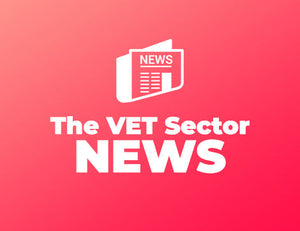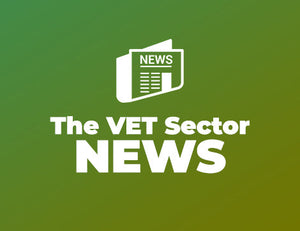
Planning, conducting and reviewing an assessment
SUKH SANDHUAssessment is an integral part of education and training. It is the process of collecting evidence to determine whether learners have achieved the intended learning outcomes or competencies. Effective assessment requires careful planning, conducting, and reviewing to ensure that it is valid, reliable, fair, and consistent. This article will explore the key steps in planning, conducting, and reviewing assessments, drawing on the principles outlined in the article "Maximising confidence in assessment" by Dwyer, M. (2005).
Planning an Assessment
Planning an assessment is a crucial step in ensuring that it is valid and reliable. The following steps can help to ensure that the assessment is fit for purpose:
Identify the learning outcomes or competencies that the assessment will measure: This involves specifying the knowledge, skills, and attitudes that the learners are expected to demonstrate.
Determine the type of assessment: There are various types of assessments, such as knowledge tests, practical assessments, workplace assessments, and oral presentations. The type of assessment chosen should be appropriate for the learning outcomes or competencies being assessed.
Determine the assessment method: The assessment method refers to how the assessment will be conducted. For example, it could be conducted in-class, online, or in a workplace setting. The method chosen should be appropriate for the type of assessment and the learning outcomes or competencies being assessed.
Develop assessment criteria: Assessment criteria are the standards against which the learners' performance will be assessed. The criteria should be clearly defined and aligned with the learning outcomes or competencies being assessed.
Develop assessment instruments: Assessment instruments are the tools used to collect evidence of learners' performance. Examples of assessment instruments include tests, assignments, observation checklists, and simulations. The assessment instruments chosen should be appropriate for the type of assessment and the learning outcomes or competencies being assessed.
Develop marking guides or rubrics: Marking guides or rubrics are used to assess learners' performance against the assessment criteria. They should be aligned with the assessment criteria and provide clear guidance on how to allocate marks or grades.
Conducting an Assessment
Conducting an assessment involves administering the assessment to the learners and collecting evidence of their performance. The following steps can help to ensure that the assessment is conducted effectively:
Provide clear instructions: Clear instructions should be provided to the learners on how to complete the assessment, including any time limits, assessment conditions, and submission deadlines.
Ensure assessment conditions are appropriate: Assessment conditions should be appropriate for the type of assessment being conducted. For example, if it is a written test, learners should have access to appropriate writing materials and a quiet environment.
Ensure that learners' identities are protected: The identity of the learners should be protected during the assessment process to avoid bias or discrimination.
Collect evidence of learners' performance: Evidence of learners' performance should be collected using the assessment instruments developed during the planning stage.
Ensure that the assessment is marked consistently: Marking should be consistent across all learners and all assessors. This can be achieved by using marking guides or rubrics developed during the planning stage.
Provide feedback to learners: Feedback should be provided to the learners on their performance, including areas for improvement and suggestions for further learning.
Reviewing an Assessment
Reviewing an assessment involves evaluating the assessment process and outcomes to ensure that it is valid, reliable, fair, and consistent. The following steps can help to ensure that the assessment is reviewed effectively:
Evaluate the assessment process: The assessment process should be evaluated to ensure that it was conducted in accordance with the assessment plan and any relevant policies and procedures.
Evaluate the assessment outcomes: The assessment outcomes should be evaluated to ensure that they are valid, reliable, fair, and consistent.
Seek feedback from learners and assess Feedback is crucial in the assessment process. It allows learners to understand their strengths and weaknesses and provides assessors with valuable information about the quality of the assessment process. Feedback can be collected in several ways, such as surveys, focus groups, or one-on-one discussions.
Learners should be encouraged to provide feedback on the assessment process, including the clarity of the instructions, the relevance of the tasks, and the appropriateness of the assessment methods. This feedback can be used to make improvements to future assessments and ensure that learners have a positive experience.
Assessors should also seek feedback from each other to ensure the consistency and fairness of the assessment process. This feedback can be used to identify any gaps in knowledge or skills and address them through professional development or training.
Evaluate and improve the assessment process
Evaluation is an essential part of the assessment process. It allows RTOs to measure the effectiveness of their assessment practices and identify areas for improvement. Evaluation can be conducted in several ways, such as surveys, focus groups, or one-on-one discussions.
Evaluation should focus on the quality of the assessment process and the outcomes achieved. RTOs should measure the reliability and validity of the assessment methods used, the consistency of assessment outcomes, and the quality of feedback provided to learners.
Based on the evaluation results, RTOs should make improvements to the assessment process. This may involve updating assessment tools, providing additional training for assessors, or making changes to assessment policies and procedures.
Document the assessment process
Documentation is crucial in the assessment process. It allows RTOs to demonstrate compliance with regulatory requirements and provides evidence of the quality of the assessment process. Documentation should be comprehensive, accurate, and up-to-date.
RTOs should document the assessment process from start to finish. This includes the assessment plan, assessment tools and instruments, assessment outcomes, feedback provided to learners, and any improvements made to the assessment process.
Documentation should be stored securely and accessible to relevant stakeholders, such as assessors, trainers, and auditors. It should also be regularly reviewed and updated to ensure its accuracy and relevance.
Conclusion
Effective assessment practices are crucial for the success of RTOs and the learners they serve. Planning, conducting, and reviewing assessments should be a collaborative effort involving all stakeholders, including trainers, assessors, and learners. By following the principles outlined in this article and using the resources available, RTOs can maximize confidence in their assessment practices and ensure the best possible outcomes for learners.





